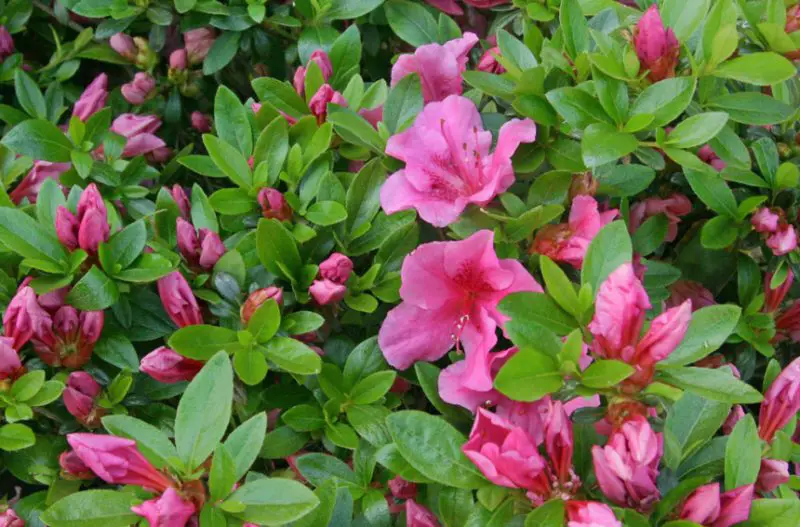Azaleas are prized for their vibrant blooms and lush green foliage, making them a favorite in gardens around the world. However, many gardeners face the frustrating problem of azaleas that refuse to bloom. If your azaleas are producing healthy leaves but few or no flowers, there are several factors that could be causing the issue. Understanding these problems and applying the right solutions will help you restore your plants to full, colorful glory.
In this guide, we will explore the main reasons why azaleas fail to bloom and provide detailed, practical ways to encourage healthy flowering again.
Understanding the Natural Blooming Cycle of Azaleas

Before jumping to conclusions, it is essential to understand the natural growth and blooming patterns of azaleas. These plants typically bloom once a year, with most varieties flowering in spring. Some reblooming hybrids can produce a second flush of flowers in late summer or early fall, but traditional azaleas follow a single blooming cycle.
Azaleas form their flower buds during the summer and early fall of the previous year. These buds remain dormant through winter before opening in spring. This means that any disruption to the plant during bud-setting time, such as pruning or poor care, can directly affect the following year’s blooms. Knowing this cycle is key to determining why your azaleas may not be flowering as expected.
Improper Pruning and Its Effect on Flower Production
One of the most common reasons for azaleas failing to bloom is improper pruning. Many gardeners unknowingly cut off the very flower buds that should bloom in spring. Because azaleas set their buds in late summer, pruning after this period will remove next year’s blooms.
The best time to prune azaleas is right after they finish flowering in spring. This allows the plant enough time to develop new growth and set buds for the following year. Heavy or late-season pruning not only removes buds but also stresses the plant, delaying its natural growth cycle. If you have been pruning in late fall or early spring, this could be the reason why your azaleas are not producing flowers.
To encourage future blooms, avoid excessive cutting and focus on light shaping instead. Trim only the branches that are damaged or overgrown immediately after flowering, and allow the plant to recover naturally.
Nutrient Imbalance and Excess Nitrogen
The type and balance of fertilizer you use play a significant role in how well azaleas bloom. Azaleas are sensitive to nutrient imbalances, especially when there is too much nitrogen in the soil. While nitrogen encourages leafy growth, excessive amounts can cause the plant to put all its energy into producing lush green foliage rather than flowers.
A fertilizer that is too high in nitrogen or used too frequently will almost always result in poor blooming. To fix this, switch to a balanced fertilizer formulated for acid-loving plants. A mix with a higher phosphorus ratio can encourage flower bud development, as phosphorus promotes blooming. Ideally, fertilize azaleas in late winter or early spring, just before they start to grow actively, and avoid fertilizing in late summer when buds are forming.
Using organic compost or slow-release fertilizers can also help maintain the right nutrient balance and provide long-term soil improvement without overwhelming the plant.
Insufficient Sunlight for Healthy Flowering
Azaleas thrive in filtered sunlight or partial shade, but too little light can severely reduce flower production. If your azaleas are planted in dense shade or under heavy tree cover, they may focus on growing leaves rather than producing blooms. On the other hand, too much direct sun can stress the plant, causing leaf scorch and bud drop.
The ideal location for azaleas is one where they receive bright morning sunlight and light afternoon shade. Moving azaleas to a sunnier spot or thinning nearby branches that block sunlight can dramatically improve flowering over time. If moving the plant is not possible, pruning surrounding shrubs or trees to increase light exposure may help encourage more blooms.
Improper Watering and Moisture Stress
Watering plays a crucial role in keeping azaleas healthy and blooming. Both overwatering and underwatering can prevent flower bud development. Azaleas have shallow root systems that require consistently moist but well-drained soil. Excessive waterlogging can suffocate roots, while drought stress can cause buds to dry up and fall before blooming.
For best results, water deeply but infrequently, allowing the soil to remain slightly moist without becoming soggy. Mulching around the base of the plant with pine needles or bark can help retain soil moisture and keep roots cool. During dry summer months, consistent watering is especially important as this is when flower buds are forming for the following season.
Temperature Fluctuations and Frost Damage
Sudden changes in temperature, especially during the bud-setting period, can interfere with blooming. Late spring frosts or sudden cold snaps in early fall can damage developing buds, causing them to turn brown and fall off before opening. Similarly, extreme heat during summer can stress the plant, leading to fewer blooms the following year.
To protect azaleas from temperature stress, consider planting them in a sheltered location where they are protected from harsh winds and extreme weather. Applying mulch around the base can also help regulate soil temperature and protect roots during cold spells. In regions prone to late frosts, covering the plant with a light fabric during cold nights can help protect sensitive buds.
Soil Acidity and pH Imbalance
Azaleas thrive in slightly acidic soil with a pH between 4.5 and 6.0. If the soil becomes too alkaline, nutrient absorption is affected, leading to poor growth and weak flowering. Yellowing leaves and stunted blooms are often signs of pH imbalance.
Testing your soil with a pH kit can determine whether the acidity is within the ideal range. If the pH is too high, adding elemental sulfur or acid-based fertilizers can help lower it gradually. Using pine bark mulch or composted oak leaves can also help maintain acidic conditions naturally. Maintaining the right pH ensures that azaleas can absorb essential nutrients required for strong bud development.
Pest and Disease Problems Affecting Buds
Pests and diseases can sometimes be the hidden reason behind poor flowering. Lace bugs, spider mites, and azalea caterpillars can damage leaves and reduce the plant’s energy for bud production. Fungal diseases like petal blight or bud blight can infect flower buds, causing them to shrivel and fall before blooming.
Regular inspection of your azaleas is essential to catch problems early. Washing leaves with a gentle spray of water can remove pests, while insecticidal soap or horticultural oils can help control infestations. For fungal issues, removing infected buds and improving air circulation around the plant can reduce disease spread. Healthy, pest-free plants are far more likely to produce abundant flowers.
Age and Overcrowding of Azalea Plants
Older azaleas or those that have become overcrowded often show reduced flowering. As plants age, their growth slows, and they may produce fewer buds each year. Overcrowding also leads to competition for nutrients, water, and light, which reduces flowering performance.
If your azaleas are old and woody, rejuvenation pruning immediately after flowering can encourage fresh growth and stimulate new bud formation for the following year. For overcrowded areas, thinning or transplanting some plants to provide more space and air circulation will help them bloom better.
Quick Fixes to Encourage Azaleas to Bloom Again
Restoring your azaleas to full blooming potential takes time, but consistent care will make a difference. Start by adjusting pruning schedules, improving soil fertility, and ensuring the plant receives adequate sunlight. Water consistently and protect buds from frost or extreme heat. Over time, these efforts will strengthen the plant and help it produce more vibrant blooms each season.
Patience is key, as azaleas set their buds months in advance. If you address the issues now, you are essentially preparing the plant for the next year’s flowering cycle. With the right conditions and proper care, your azaleas can return to their former glory, rewarding you with masses of colorful blossoms.
FAQs About Azaleas Not Blooming
When do azaleas typically bloom?
Most azaleas bloom in spring, while some reblooming varieties flower again in late summer or early fall. Buds form during summer and remain dormant through winter before opening.
Can I prune azaleas in winter if they are overgrown?
Pruning in winter can remove flower buds and reduce blooming. The best time to prune is right after flowering in spring.
What fertilizer is best for encouraging blooms?
Use a balanced, slow-release fertilizer for acid-loving plants with slightly higher phosphorus content to promote flowering.
How long does it take for azaleas to recover and bloom again?
If the cause of poor blooming is corrected, azaleas typically take one full growing season to recover and produce better blooms the following year.
Do azaleas need to be transplanted if they stop blooming?
Only if they are overcrowded or planted in too much shade. In most cases, adjusting care practices is enough to restore blooming.






